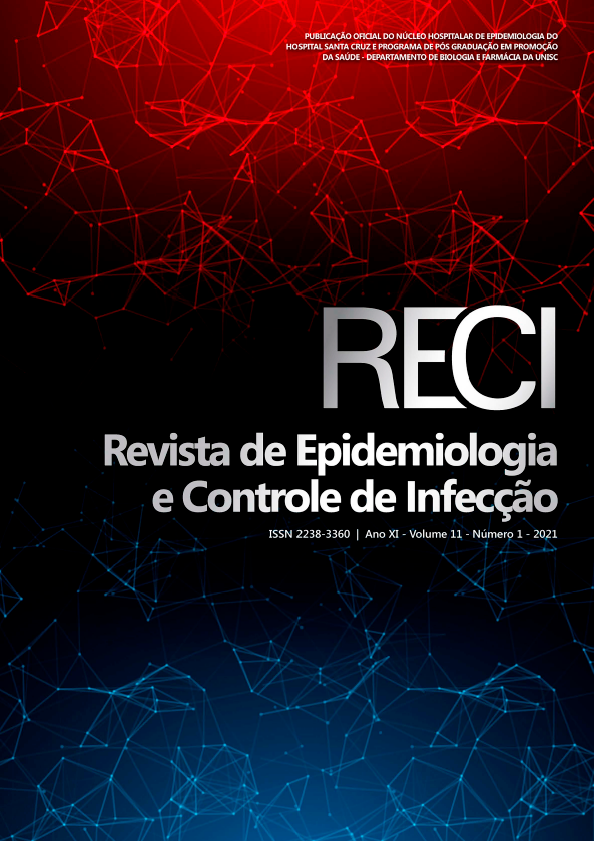Molecular epidemiology of carbapenem-resistant Acinetobacter baumannii from Southern Brazil
DOI:
https://doi.org/10.17058/reci.v1i1.15017Palabras clave:
Carbapenem-resistant Acinetobacter-baumannii, carbapenemases, OXA-23, PFGEResumen
Carbapenem resistance in Acinetobacter baumannii has reached extremely high levels worldwide and class D OXA-type carbapenemases are the main associated mechanism. The aim of this study was to evaluate the phenotypic and molecular profile of clinical carbapenem-resistant A. baumannii (CRAb) isolates from a southern Brazilian border region. A. baumannii species was identified by the presence of the blaOXA-51 gene and the susceptibility profile was determined by broth microdilution. The main carbapenemases were investigated by PCR and the typing of the CRAb isolates was performed by PFGE. During the study period, a total of 36 CRAb were recovered, 71.4% from respiratory tract samples from ICU patients. High level resistance to aminoglycosides and fluroquinolones were found in contrast to polymyxin B, for which all of CRAb were susceptible. The blaOXA-23 gene was present in 34 isolates and was the only one detected other than blaOXA-51. Molecular typing revealed the presence of four clonal strains, two of them endemic throughout the study period. To the best of our knowledge, our study brings the first data about resistance profile in Acinetobacter in the western border of south of Brazil and make aware of endemic clones of CRAb-producing-OXA-23 in this region of state, contributing for the construction of the national epidemiologic scenario of CRAb.Descargas
##submission.downloads##
Publicado
Cómo citar
Número
Sección
Licencia
Derechos de autor 2021 Vanessa Bley Ribeiro, Gabriel de Paula Gollino, Bruna Machado Escobar, Ilson Dias da Silveira, Rosa Helena Robales Siqueira, Joseane Cristina Ferreira, Ana Lúcia da Costa Darini

Esta obra está bajo una licencia internacional Creative Commons Atribución 4.0.
The author must state that the paper is original (has not been published previously), not infringing any copyright or other ownership right involving third parties. Once the paper is submitted, the Journal reserves the right to make normative changes, such as spelling and grammar, in order to maintain the language standard, but respecting the author’s style. The published papers become ownership of RECI, considering that all the opinions expressed by the authors are their responsibility. Because we are an open access journal, we allow free use of articles in educational and scientific applications provided the source is cited under the Creative Commons CC-BY license.


